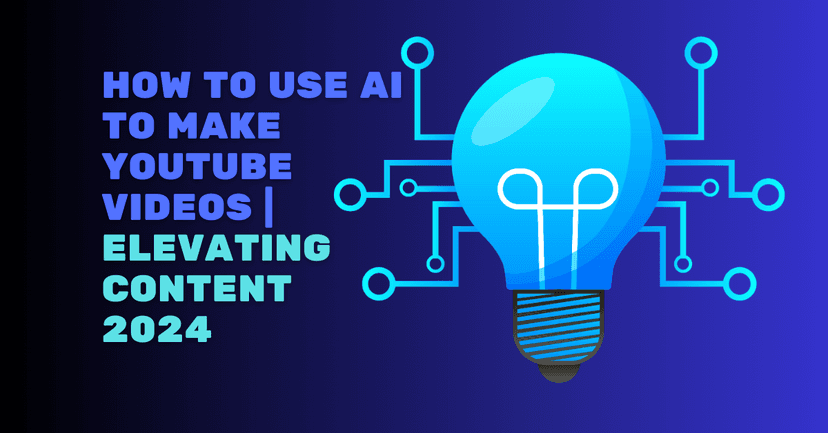Here’s a beginner’s guide on how to create how-to videos. Learn the steps and leverage these videos’ expansive viewership. Check this out today!
Nearly 3.5 billion online users watch video content.
Almost a third of these digital consumers prefer informative how-to videos, while three in ten love educational visual content.
Moreover, Think with Google says how-to videos capture the audience's attention on YouTube, blasting gaming and music clips.
Unfortunately, some beginner video creators shun these types.
They think it’s too complicated, requiring technical expertise and a teacher’s passion. Not necessarily! We will teach you.
Here’s a beginner’s guide on how to create how-to videos. Learn the steps and leverage these videos’ expansive viewership.
What Are How-To Videos?

Some call how-to videos tutorial videos, while others prefer “instructional videos.”
Regardless of how digital consumers call it, a how-to video is precisely what the term implies.
It’s like a process manual with step-by-step procedures, except you don’t read it (although it can have closed captions). You watch the steps unfold.
For example, learning how to transform a baby portrait or doggie picture into a talking head is easier than reading the instructions. It goes with virtually anything you want to learn to do.
Interesting Read: How to Make YouTube Shorts Using AI
Benefits of How-To or Instructional Videos
Appreciating the many advantages of how-to videos is easy.
After all, three in five learners prefer watching educational how-to videos to reading written instruction.
Although the figures are among students, the real world isn’t far off. So, why should you create how-to videos?
Wider Audience Reach
As mentioned, around 30% of online users watch how-to videos, mainly on YouTube and other popular platforms.
And since around three and a half billion digital consumers watch videos, you’re looking at about a billion potential audiences.
That’s impressive! Even if you only corner a fraction of this segment, audience reach will be more impressive than other video types.
Encourages More Engagement
Pew Research Center says that nearly nine in ten (87%) Americans search for how-to videos to learn and address concerns.
They might own an appliance, gadget, or device and want to operate, manage, repair, or replace it.
Individuals can have an owner’s manual, but they will still search the internet for actual videos.
People who watch how-to videos tend to ask follow-up questions.
They also share experiences about the steps or procedures, what works and doesn’t, and other information bits worth sharing. That’s engagement.
And the more engaged your audience is, the better your brand will be.
Improves Audience Understanding
Thirteen in twenty online users learn and retain more information by watching videos than by assimilating knowledge through reading. Powerful words! That’s from Google.
Reading step-by-step instruction requires more complex cognitive processing. Before one can perform the steps, the brain comprehends words and translates them into visuals.
How-to videos bypass word translation and show the brain how to do a procedure.
Builds credibility and trust
Engaging audiences improves credibility.
People learning from your instructional how-to videos will share the content with their social circle.
And if you create a high-quality how-to video, you can strengthen your trustworthiness score.
Interesting Read: How to Create Effective Training Videos for Employees [2024]
5 Easy Steps on How to Create How-to Videos for Beginners

Newbie video creators mustn’t think how-to videos are beyond their reach. Although such content is more purposeful than freewheeling versions, the process isn’t complicated. Here are five super easy steps to help you create and publish your very first how-to video.
Step 1. Plan your how-to video.
Everything starts with a solid plan, including what how-to topic you want to focus on.
Tutorial videos must deliver concise, comprehensive, and precise information.
So, you will want to identify your audience, the correct topic, and the right video type (i.e., live-action, animation, or screen recording).
Brainstorm with your creative team to devise a comprehensive how-to video for your target audience.
Decide whether to use traditional video production methods or a generative AI video maker.
Step 2. Create a storyboard or script.
Part of planning is creating a video script. A storyboard helps if you’re making live-action videos.
It makes presenting videos more effortless, organized, and systematic.
They outline a smooth flow of thought, allowing viewers to understand the steps better.
You can write the script or use AI script generator ChatGPT to develop a compelling narrative. We recommend the latter for beginners unless you’re a wizard with words.
Step 3. Practice.
Newbie how-to video creators might want to practice the script several times before the shoot.
This action helps minimize errors during filming and ensures a smoother flow.
Additionally, you can check which actions are better and which words are easier to understand. You can tweak this before shooting.
The good news is you can ditch this step if you plan to create the how-to video with an AI video producer.
These platforms integrate natural language processing in multiple languages and voiceover samples to make your videos more credible.
Step 4. Shoot the how-to video.
Pick the right location, adjust the lighting and sound-capturing devices, set the actors, and prepare all materials.
Ideally, you will want someone with a cinematographic flair behind the camera.
Alternatively, you can record your digital screen or use Puppetry (or other AI videomakers) to produce the how-to video.
We recommend this approach for beginners because it’s more hassle-free and won’t hurt your budget.
Did you know? You can also create video lectures without camera using Puppetry
Step 5. Edit the video.
Shooting the how-to video produces raw footage you must clean up and polish before publishing.
Add captions, adjust the brightness and contrast settings, tweak unnecessary background details, and manage other visual elements.
Check the sound quality and add background music or unique sound effects.
These activities require eagle-eyed attention to detail.
You Might Also Be Interested: BEST 5 AI Talking Head Generators You Must Try! [2024]
Puppetry: An Easier Method to Create How-To Videos
You will not have any issues with AI video production platforms like Puppetry.
You can use ChatGPT to generate your script, assign an AI avatar or AI presenter, choose a voice, and then submit the video for processing!
Creating your how-to video is beyond convenient with Puppetry! You can also use it as an AI audio generator.
Final Thoughts
Have fun creating how-to videos with AI-powered video makers.
These tools are convenient, practical, and effective.
However, if you desire the traditional method of doing things, you can always grab a camera and film the steps of a particular procedure.
Regardless of the method, planning beforehand remains a crucial step.



